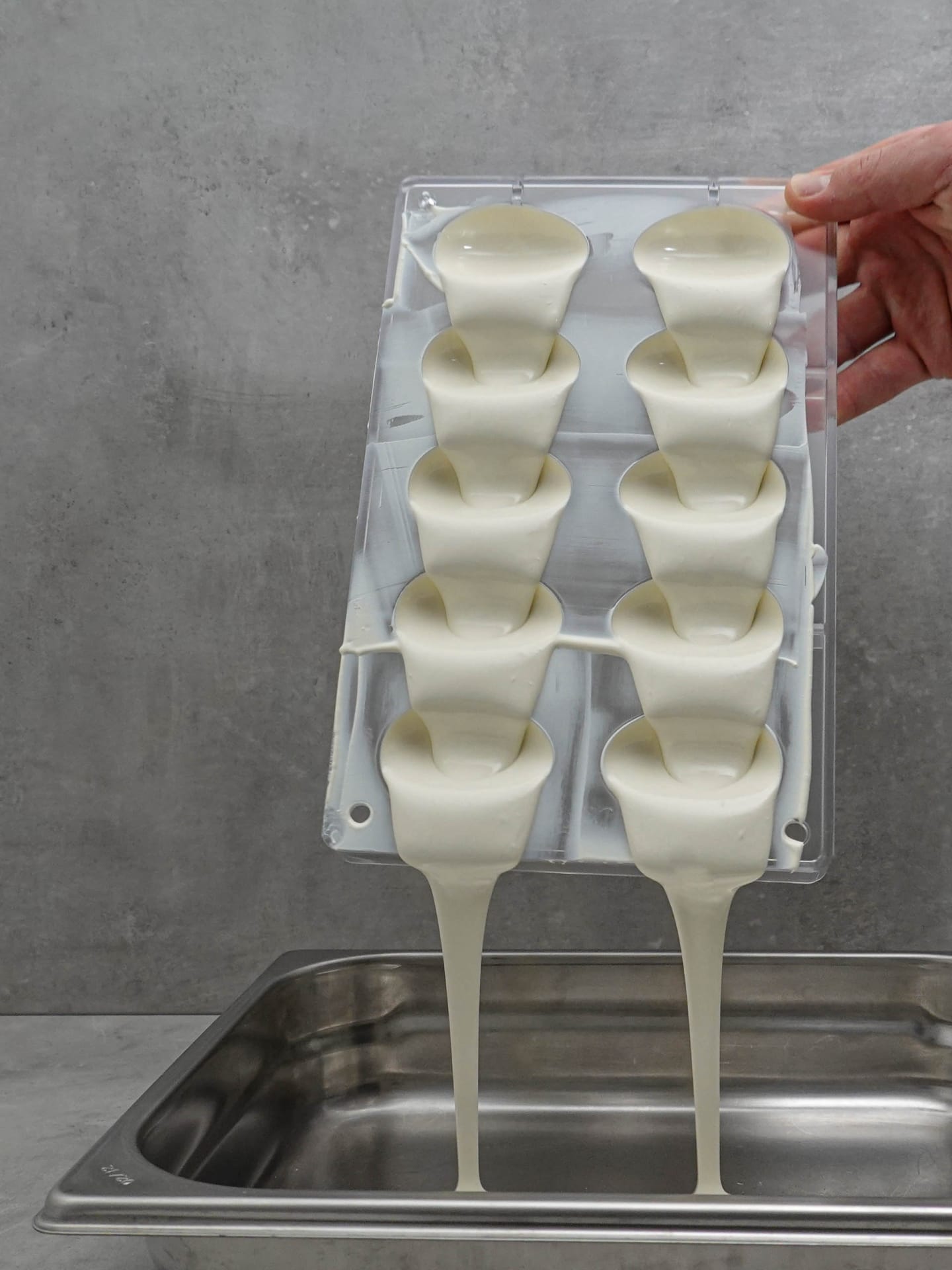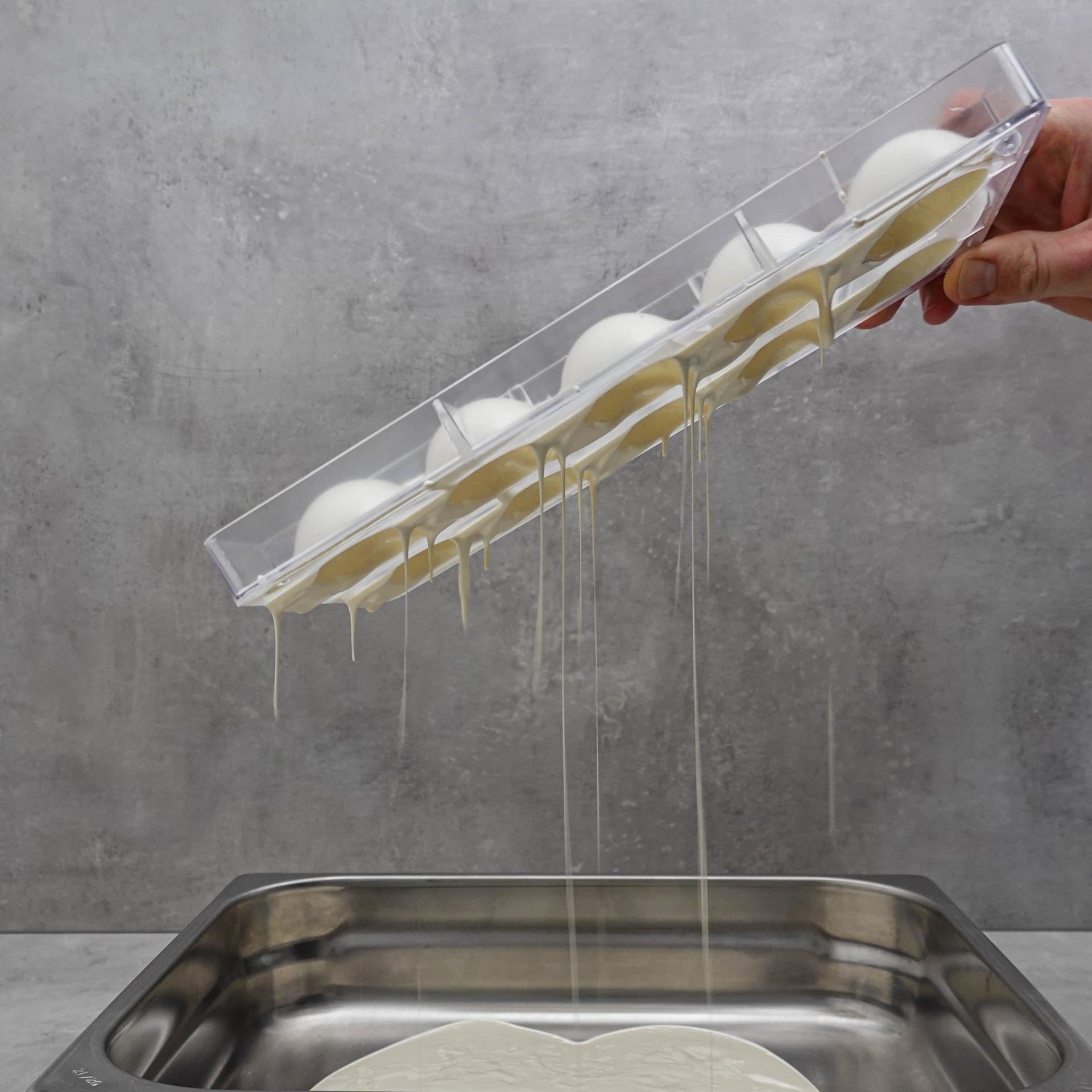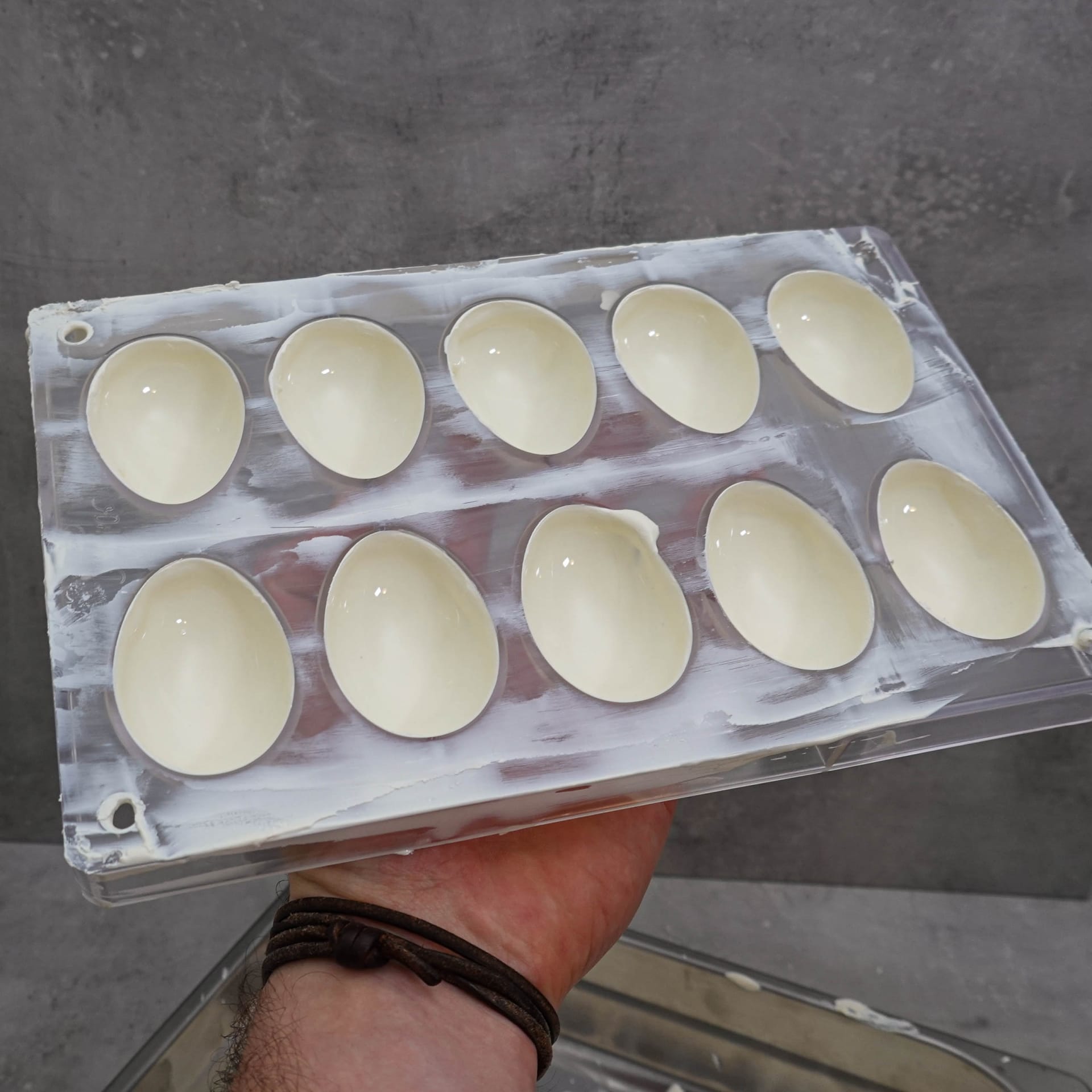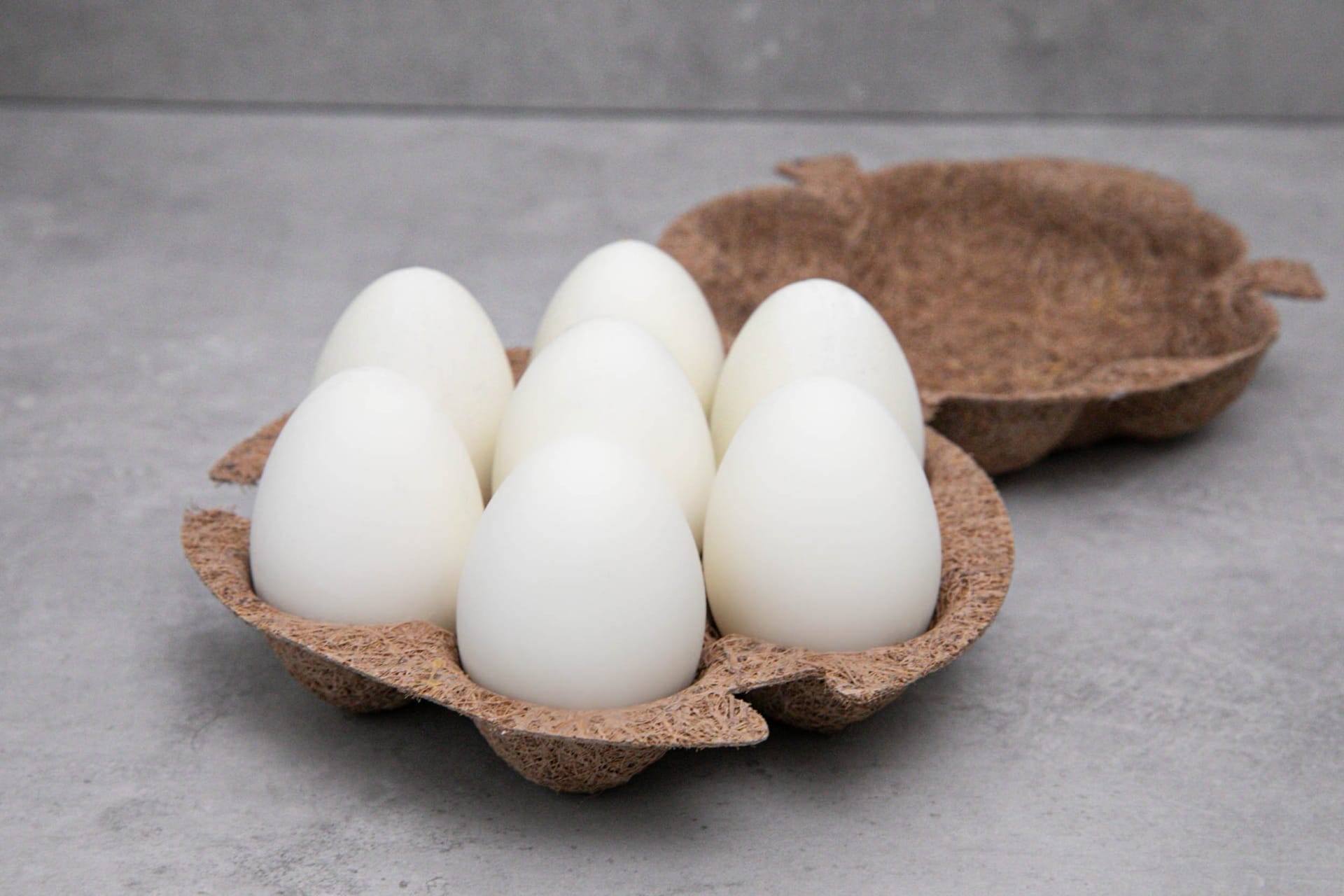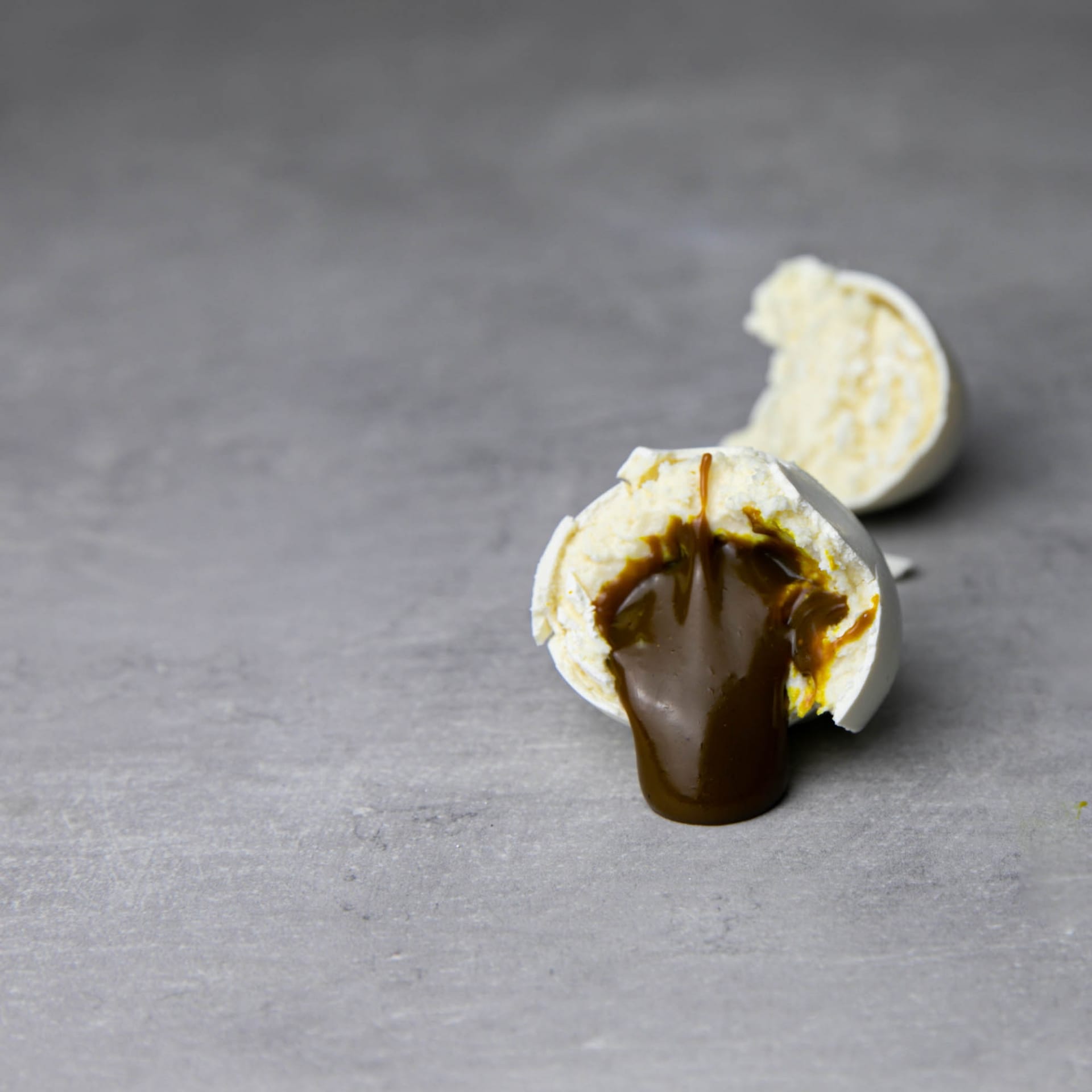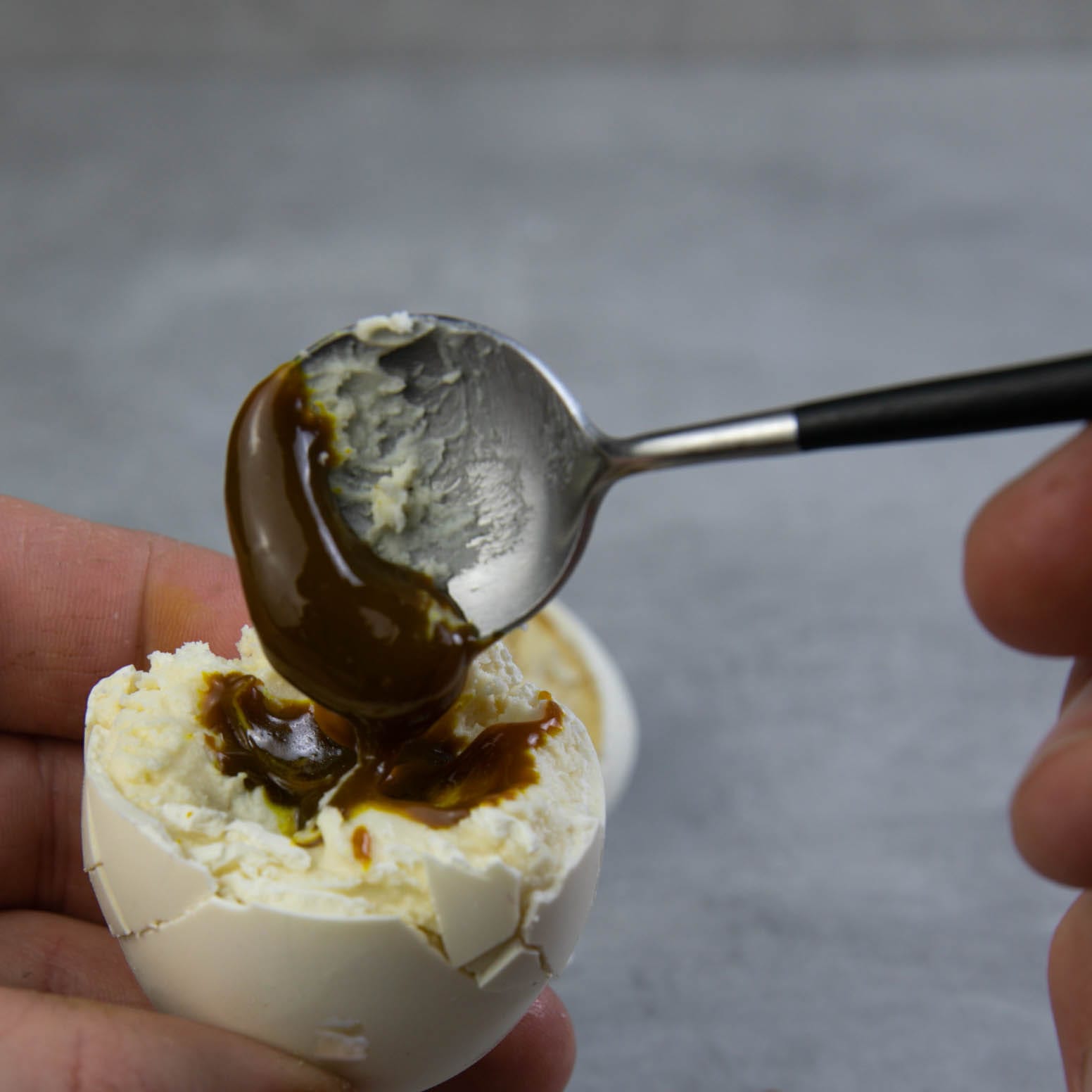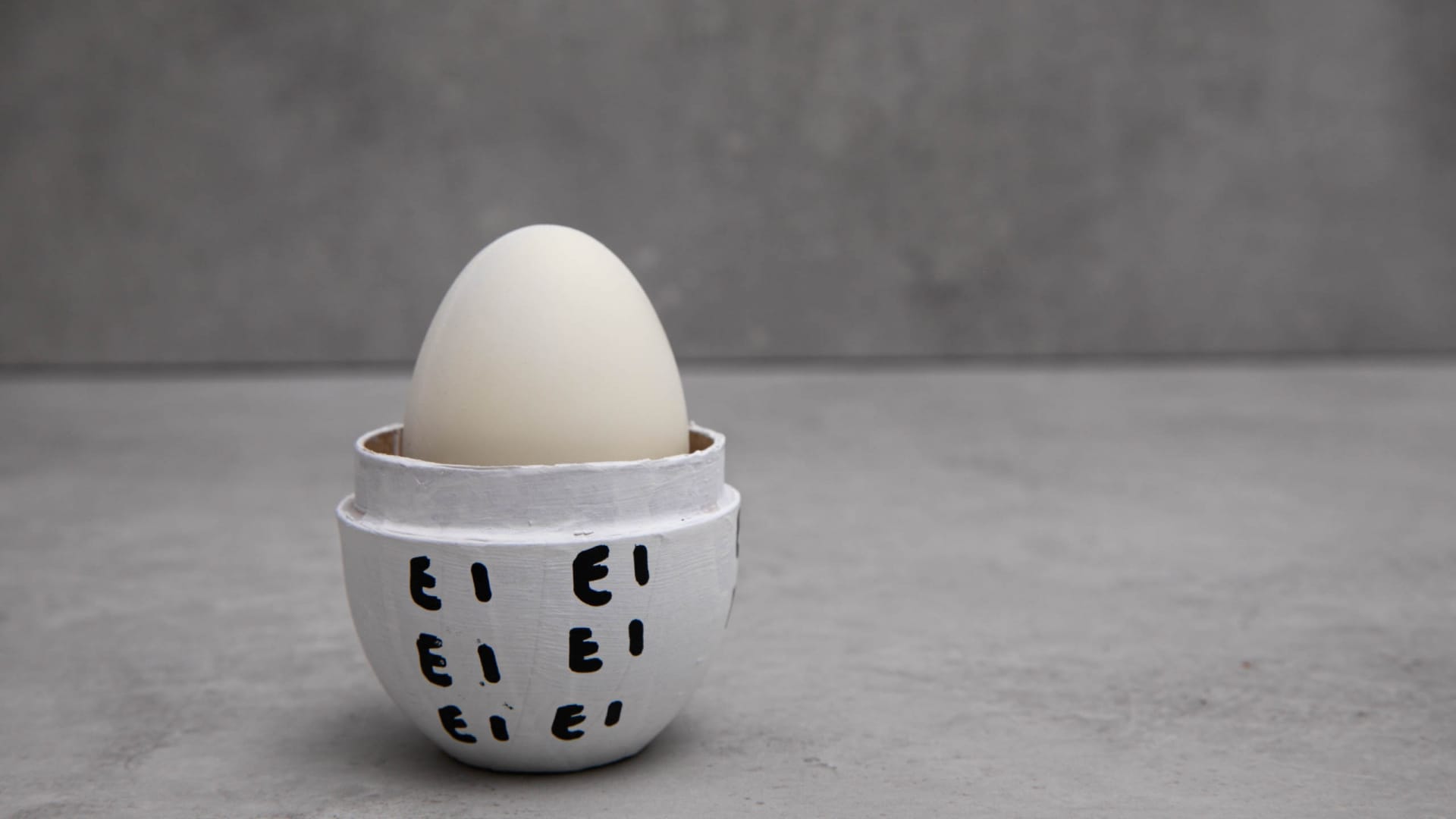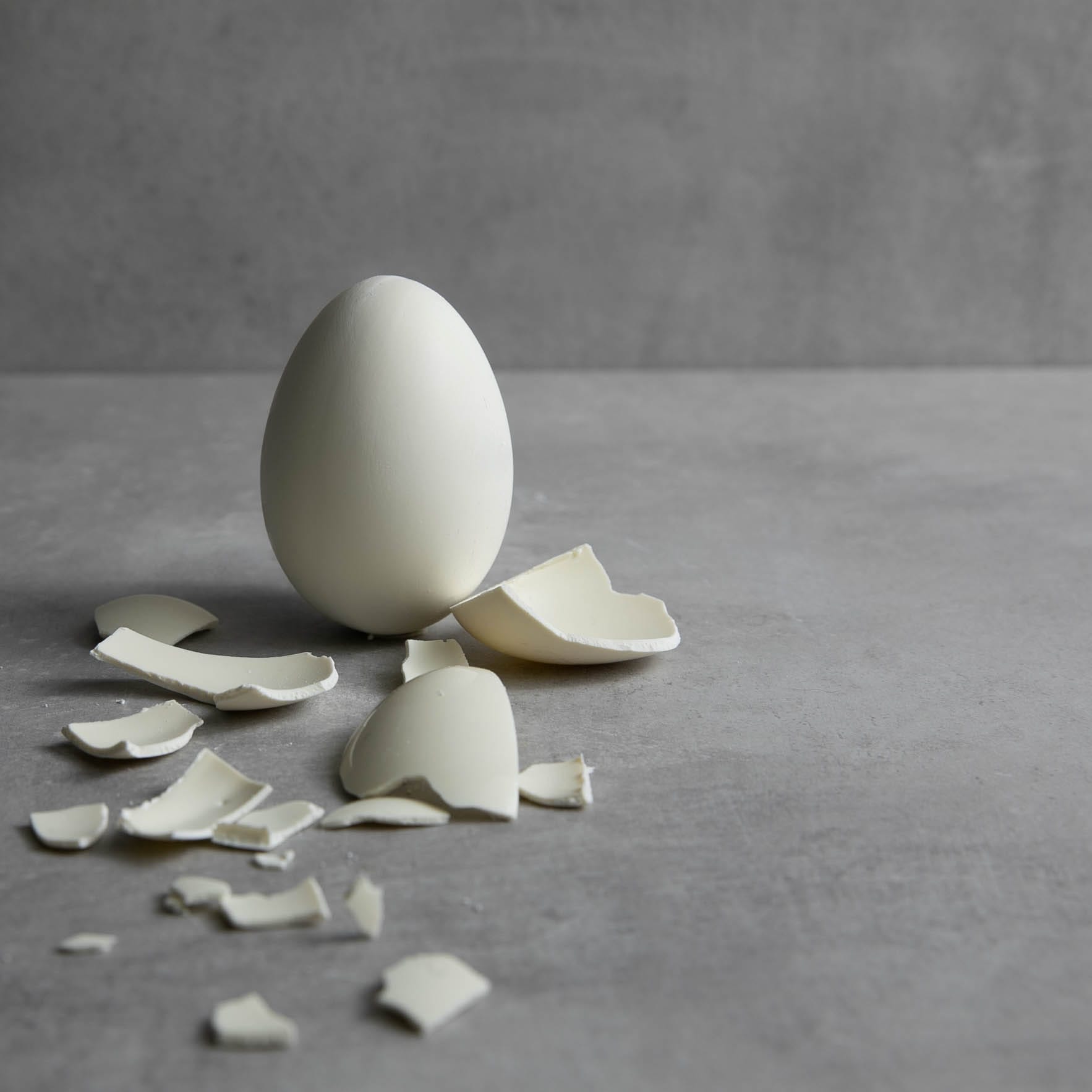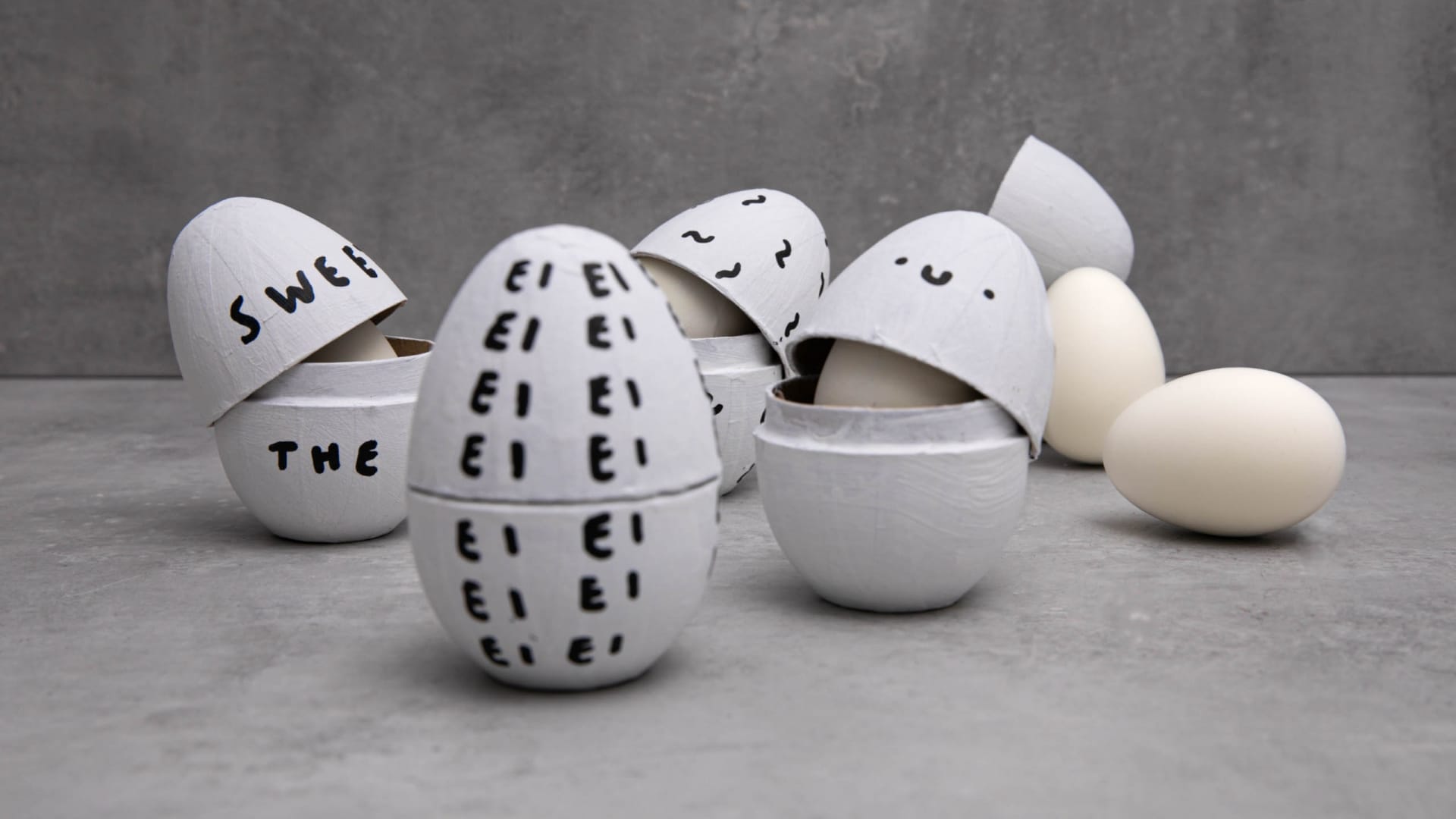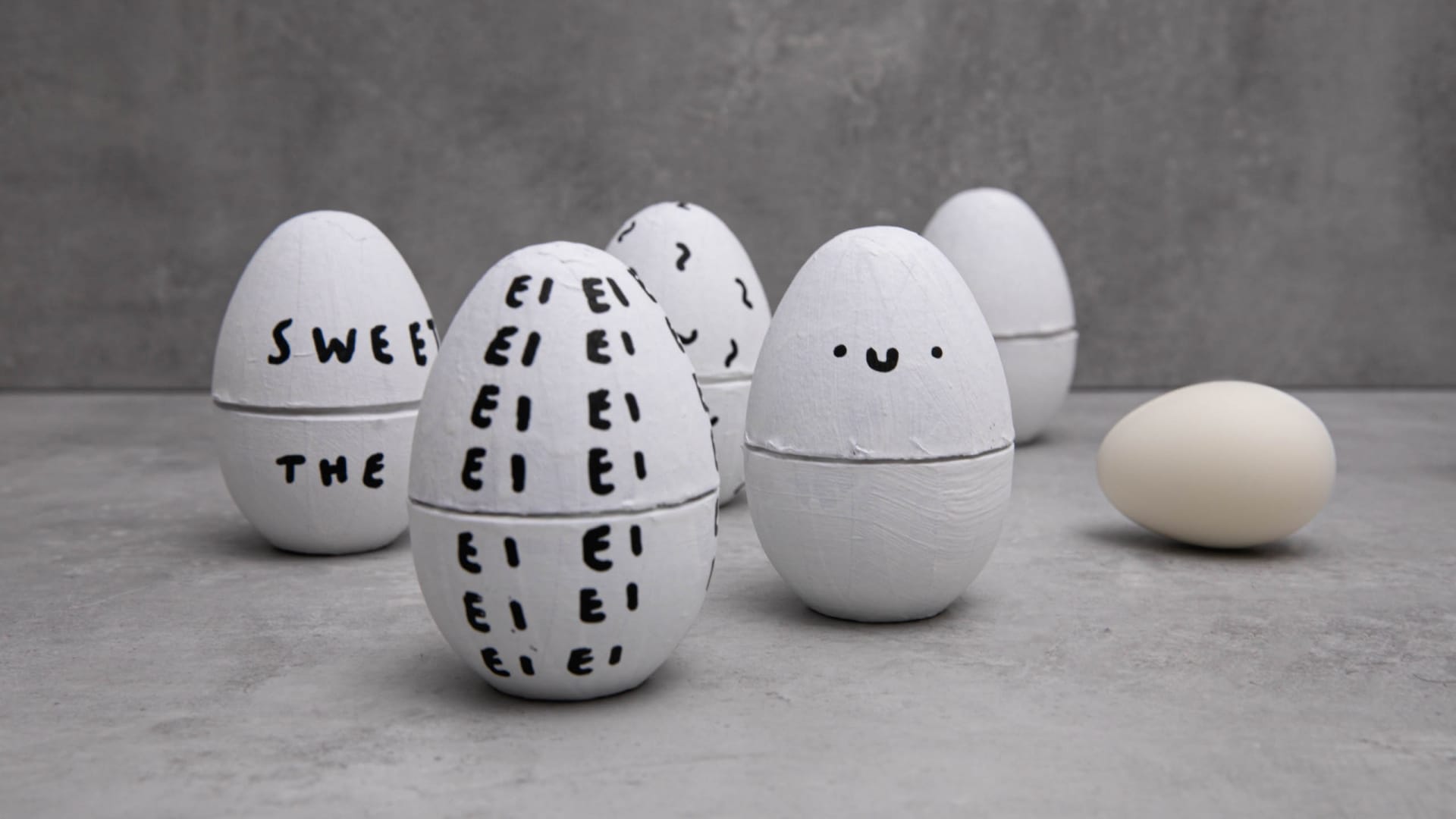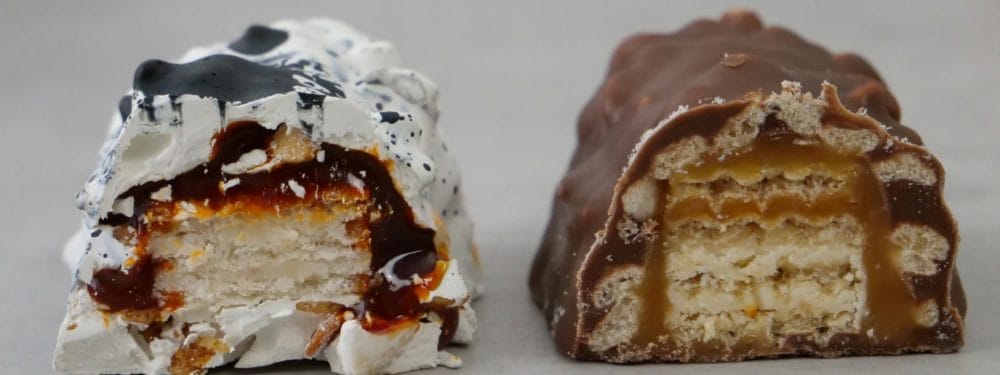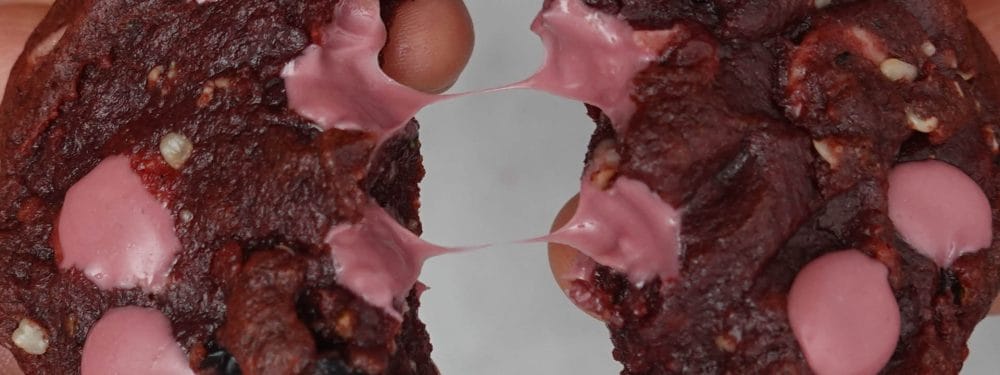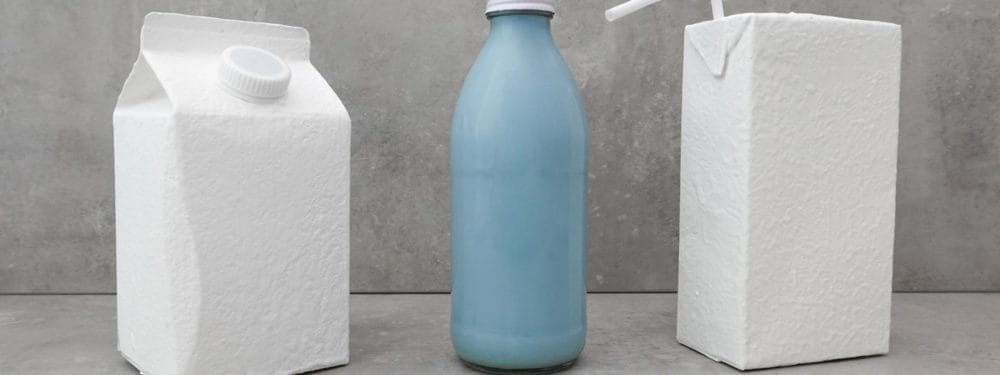About searching and finding: Egg without egg
Easter time, rabbit time, lambing time but also egg time. Eggs are a curiosity. Stand for life, even resurrection (there fits the Easter egg, of course) and are a true marvel – but for others just a simple breakfast companion. There are so many questions about the egg, the most obvious being which came first, hen or egg, which has given rise to the metaphor of the hen-egg problem.
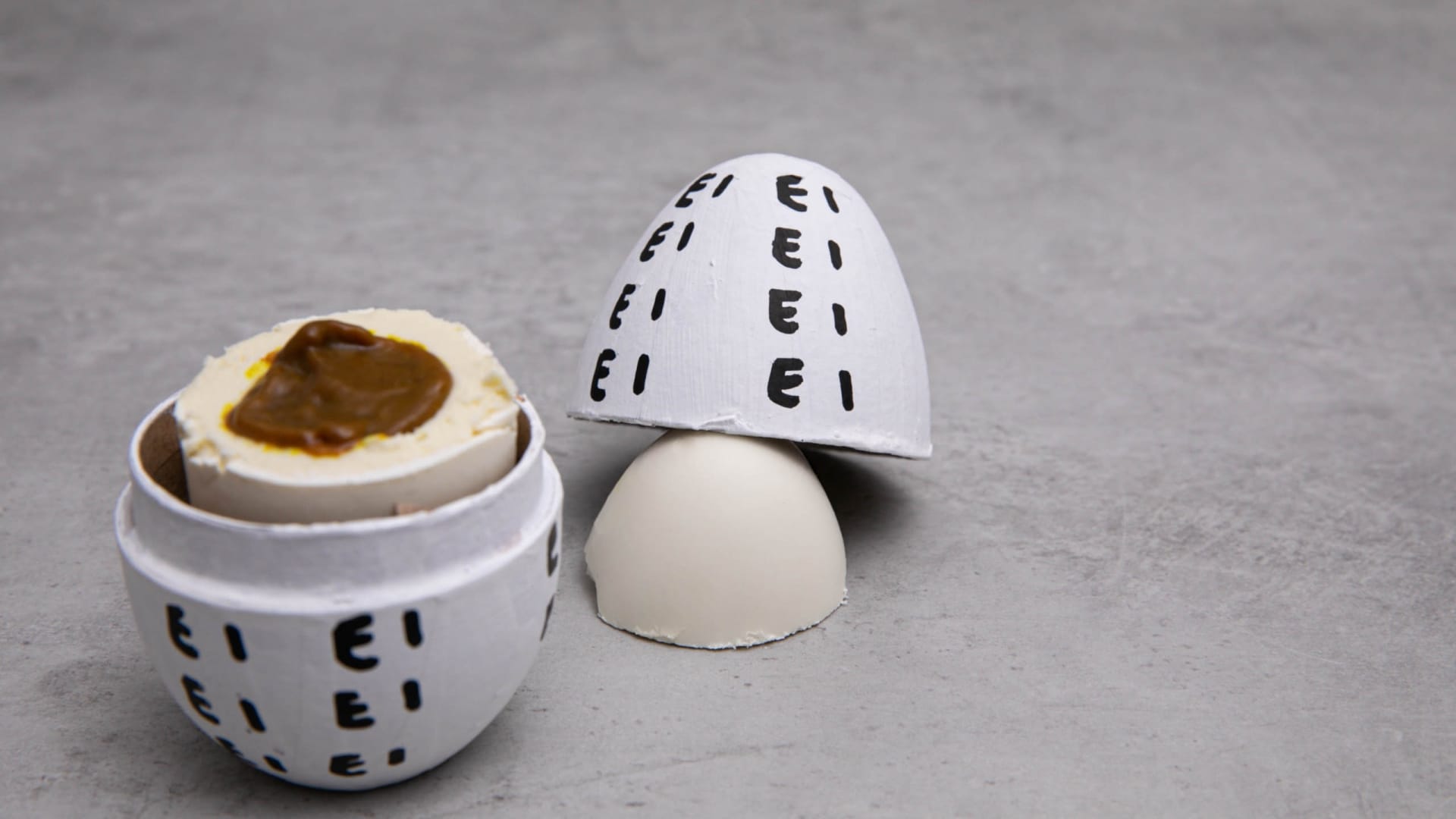
Eggs are fascinating from a kitchen perspective alone. It can be used to make complex baked goods, creams, foams, etc., and light and airy mousses. This is exactly what poses some challenges for vegan cuisine because eggs are ideal technical helpers that are not so easy to replace. We rise to the challenge and make an egg without egg. More precisely, a filled chocolate egg with vegan chocolate mousse.
Eieiei
The “shell” is crunchy chocolate, the “white” is vegan mousse, and the “yolk” is a vegan dulce de leche caramel.
Easter egg yellow
For the “yolk”, we take our cue from a classic dulce de leche, for which sweetened condensed milk is heated until it begins to caramelize. But our Easter egg is supposed to be vegan, so we also need a vegan caramel cream. That’s why we use coconut milk and coconut blossom sugar instead of condensed milk. We boil the two ingredients in a small pot and simmer the mixture over medium heat for three hours. Color and consistency change, the milk becomes darker, thicker and acquires the typical caramel sheen.
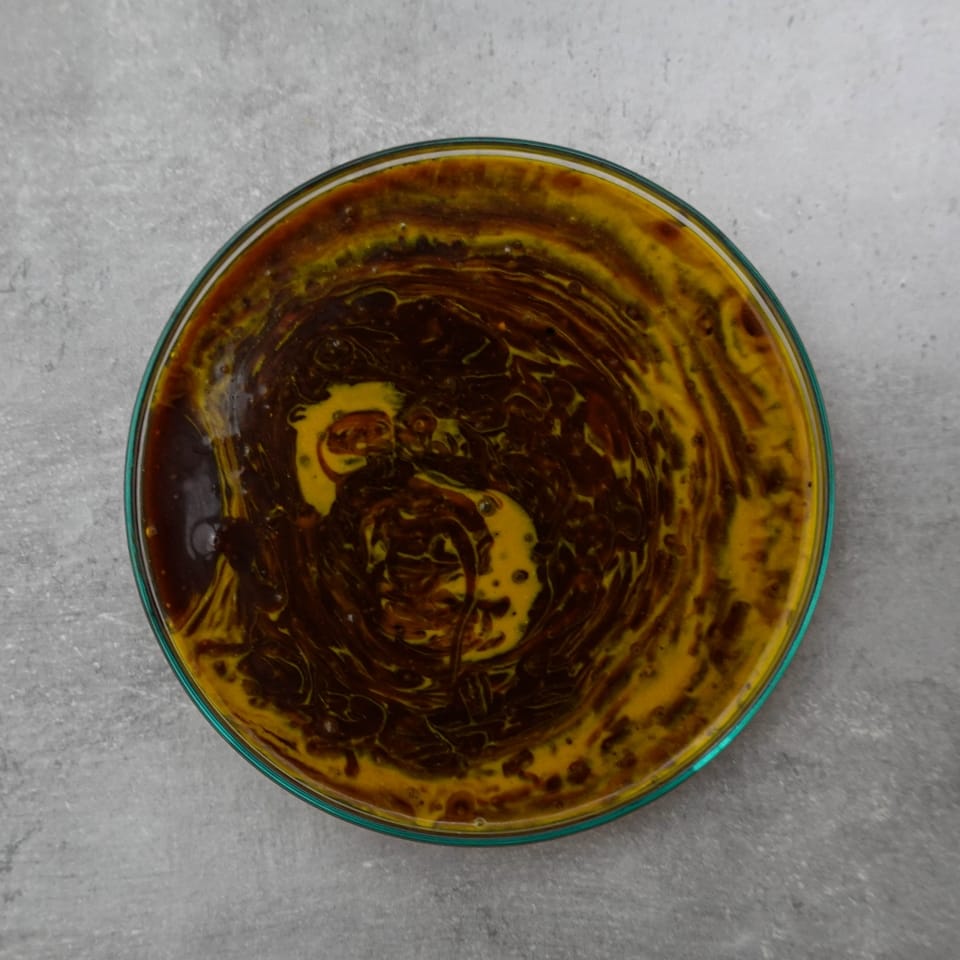
We remove the caramel from the heat after about 3.5 hours and cool it down quickly so that the reduction process is interrupted directly. To make the brownish color a bit more like egg yolk, we try to add some food coloring, but the browning is too intense.
Easter egg white
Resourceful chefs and scientists like Hervé This or Heston Blumenthal have already shown it: A convincing chocolate mousse can be made from water and chocolate without any other ingredients. Water + chocolate = chocolate mousse. Sounds incredible, because water is usually considered the enemy of chocolate, but it is actually quite easy to make. Instead of a dark chocolate, we try white. Whether this would work in the same way was disputed among us in the team – which is exactly why we tried it.
For the white chocolate mousse, we follow Hervé This’s approach. For the dark mousse, pour hot water over the chocolate and then whisk on ice to form a mousse. The principle is similar to whipping cream. Cream is a fat-in-water emulsion and by whipping it, air is worked into it or held by the fat droplets. This is how whipped cream is made. The right ratio of fat and water is important here. 225g of dark chocolate with 200g of water makes a good ratio. If the mass is not solid, it needs a little more chocolate, if it is too solid more water. This is easy to try at home.
But we try this for our Easter egg with white chocolate. Here, this process is somewhat more difficult. The quantity ratio is not directly correct, which is why we slowly approach the result…search and find, that is. We mix and cool alternately, repeating the process 3-4 times. In this way we prevent immediate crystallization and gain creaminess. The ratio of chocolate to water should be somewhat higher for white chocolate, but we did not achieve a perfect mousse, but a creamy texture, slightly crystalline, but delicately melting on the tongue.
Easter egg bowl
For the shell we use dark chocolate and light chocolate color.
We temper the chocolate and the color, achieving a beautiful crystallization of the chocolate, with a crisp break. After we have poured the filigree hollow bodies, the mousse has a good consistency and the caramel has a slightly creamy texture, we can assemble the eggs. We fill the hollow halves with the white chocolate cream and place in the center the caramel, which we have previously portioned into small balls. Then we put the two filled halves together and get the look of a white egg. Inconspicuous, but behind the whitish shell, hides an interesting texture game.
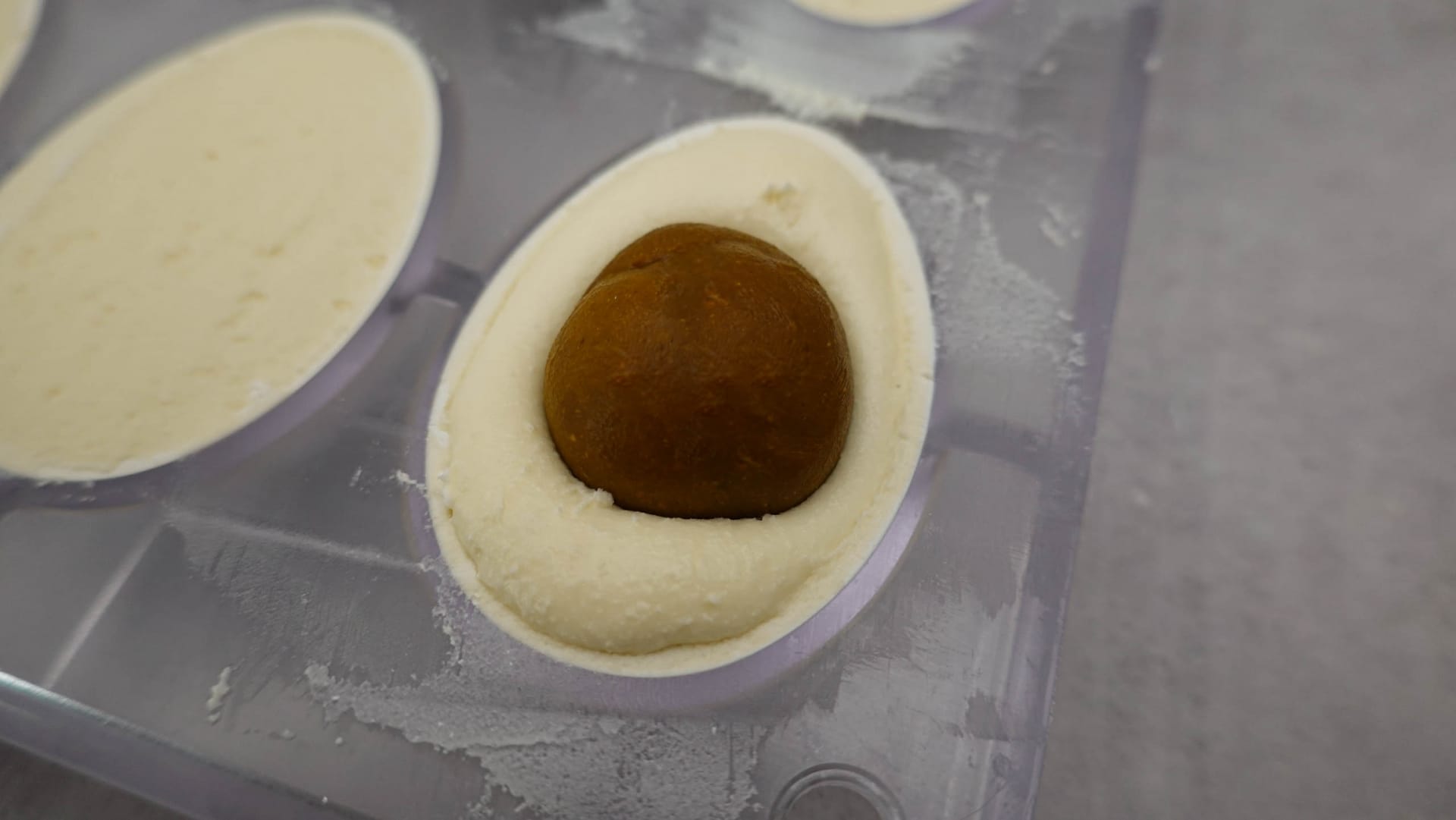
Pig’s egg
Airy, Light, Delicious: our vegan Easter egg is a fine pork egg
The eggs have the size of normal chicken eggs and with 62g they correspond to size M. Thus, they fit both in our self-designed egg shells or in the innovative “egg carton” COCOFORM made of coconut fiber, which can be seen in the last picture.
Packaging design agency meets food lab
Food Lab? So what does a food packaging design agency have to do with the food lab? We want to deal with the core of the matter before we design the surface – that is, the packaging. Only those who understand a product can translate its taste into suitable food packaging design. That’s why we have creative minds in the kitchen working on food and recipe development long before it comes to packaging.

